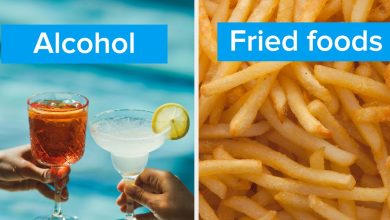Addiction Medication Offers New Hope for Long COVID Patients

Summary: Researchers have identified a potential treatment for long COVID by restoring the function of ion channels in immune cells using low-dose naltrexone. This finding, detailed in Frontiers in Immunology, mirrors previous findings in patients with chronic fatigue syndrome (ME/CFS), suggesting a common pathophysiological thread between the two conditions.
This advance could alleviate symptoms such as brain fog and muscle fatigue. Clinical trials in long COVID and ME/CFS are expected to begin, testing the effectiveness of this repurposed drug.
Highlights:
- Restoration of ion channels: The study focuses on restoring ion channel function in immune cells, crucial for regulating bodily processes and relieving symptoms.
- Reuse of naltrexone: Naltrexone, a drug commonly used to treat opioid addiction, has shown promise in preliminary studies and anecdotal reports for improving ion channel function.
- Upcoming clinical trials: Griffith University is launching two clinical trials to evaluate the effectiveness of low-dose naltrexone in treating patients with long COVID and ME/CFS.
Source: Griffith University
Researchers from Griffith University’s National Center for Neuroimmunology and Emerging Diseases (NCNED) have made a discovery that could bring relief to those battling long COVID.
In a world-first discovery, they have identified a way to restore faulty functioning of ion channels in immune cells using a well-known drug, typically used for other medical purposes.
The breakthrough, published in the journal Frontiers in immunologybuilds on previous research showing that patients with long COVID share similar problems with ion channels as those with chronic fatigue syndrome (also known as myalgic encephalomyelitis or ME/CFS).
The team had previously managed to restore ion channel function in ME/CFS patients using a drug called Naltrexone, and they have now achieved similar results with patients with long-term disease. of COVID.
First author Ph.D. candidate Etianne Sasso said the research team had previously reported restoring the function of these immune cell ion channels in laboratory tests.
“Ion channels are integral membrane proteins that facilitate the passage of ions (charged particles) across the cell membrane,” Sasso said.
“We found that by restoring the function of these ion channels, important ions such as calcium were once again able to enter and exit immune cells, thereby controlling many of the body’s biological processes.”
This breakthrough offers hope for relief from various symptoms of ME/CFS, including brain fog, muscle fatigue, and problems with the cardiovascular and gastrointestinal systems.
Professor Sonya Marshall-Gradisnik, lead author and director of NCNED, said the importance of this discovery, made through the gold standard test called electrophysiology, will help better understand long COVID and ME/CFS, paving the way to potential therapies.
NCNED is preparing to launch two clinical trials, one for long COVID and another for ME/CFS, testing the effectiveness of low-dose naltrexone.
This medication, typically used to treat opioid addiction, has shown promising results in restoring ion channel function in previous research and anecdotal patient reports.
“We will undertake two clinical trials testing the effectiveness of low-dose naltrexone, the first involving patients with long COVID, while the second trial will, for the first time, include patients with ME/CFS.” , said Professor Marshall-Gradisnik.
“If these trials prove successful, it could mean significantly improved quality of life for countless people living with long COVID and ME/CFS.” »
About this news from neuropharmacology research and long COVID
Author: Etienne Sasso
Source: Griffith University
Contact: Etianne Sasso – Griffith University
Picture: Image is credited to Neuroscience News
Original research: Free access.
“Investigation of restoration of TRPM3 ion channel activity in post-COVID-19 conditions: a potential pharmacotherapeutic target” by Etianne Sasso et al. Frontiers in immunology
Abstract
Investigation of restoration of TRPM3 ion channel activity in post-COVID-19 conditions: a potential pharmacotherapeutic target
Introduction:
Recently, we reported that patients with post-COVID-19 disease also had dysfunction of transient potential melastatin 3 (TRPM3) ion channels, a potential biomarker reported in natural killer (NK) cells of patients with myalgic encephalomyelitis/chronic fatigue syndrome (ME/CFS). Since there is no universal treatment for post-COVID-19 conditions, knowledge of ME/CFS could enable progress in the study of therapeutic targets.
Naltrexone hydrochloride (NTX) has been shown to be beneficial as a pharmacological intervention for patients with ME/CFS and experimental studies have shown that NTX restores TRPM3 function in NK cells. This research aimed to: i) validate the altered function of the TRPM3 ion channel in patients suffering from post-COVID-19 compared to ME/CFS; and ii) investigate the effects of NTX on TRPM3 ion channel activity in post-COVID-19 patients.
Methods :
Whole-cell patch clamp was performed to characterize TRPM3 ion channel activity in freshly isolated NK cells after COVID-19 (NOT = 9; 40.56 ± 11.26 years), ME/CFS (NOT = 9; 39.33 ± 9.80 years) and healthy controls (HC) (NOT = 9; 45.22 ± 9.67 years). The effects of NTX were evaluated on the post-COVID-19 state (NOT = 9; 40.56 ± 11.26 years) and HC (NOT = 7; 45.43 ± 10.50 years) where the NK cells were incubated for 24 hours according to two protocols: treated with 200 µM NTX or untreated; TRPM3 channel function was assessed with the patch-clamp protocol.
Results:
This investigation confirmed impaired TRPM3 ion channel function in NK cells from post-COVID-19 and ME/CFS patients. Importantly, PregS-induced TRPM3 currents were significantly restored in NTX-treated NK cells after COVID-19 onset compared to HC cells. Furthermore, the sensitivity of NK cells to ononetin was not significantly different between post-COVID-19 and CH after NTX treatment.
Discussion:
Our findings provide additional evidence identifying similarities in TRPM3 ion channel dysfunction between ME/CFS patients and those with post-COVID-19 disease. This study also reports, for the first time, that TRPM3 ion channel activity was restored in NK cells isolated from patients with post-COVID-19 disease after in vitro treatment with NTX.
TRPM3 restoration can therefore restore TRPM3-dependent calcium (Ca2+) influx. This investigation proposes NTX as a potential therapeutic intervention and TRPM3 as a treatment biomarker for post-COVID-19 condition.
News Source : neurosciencenews.com
Gn Health





